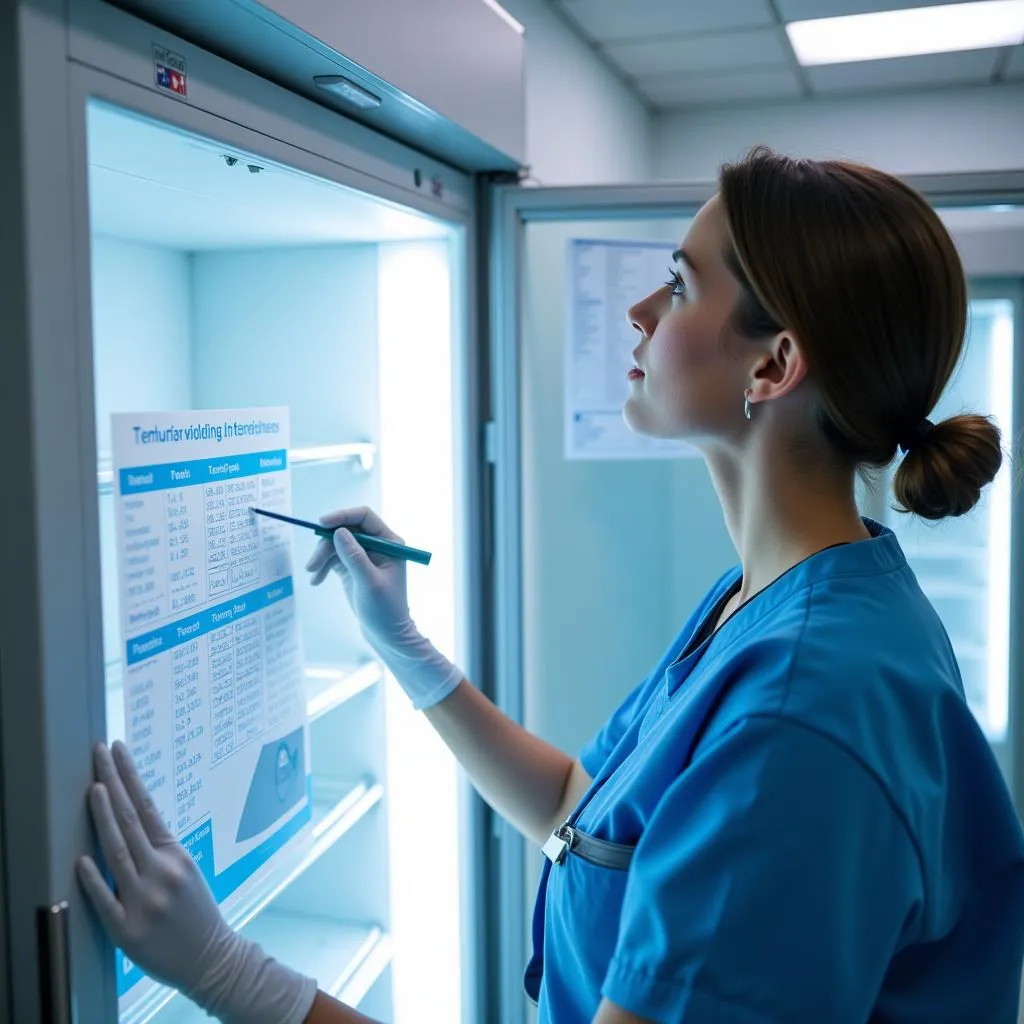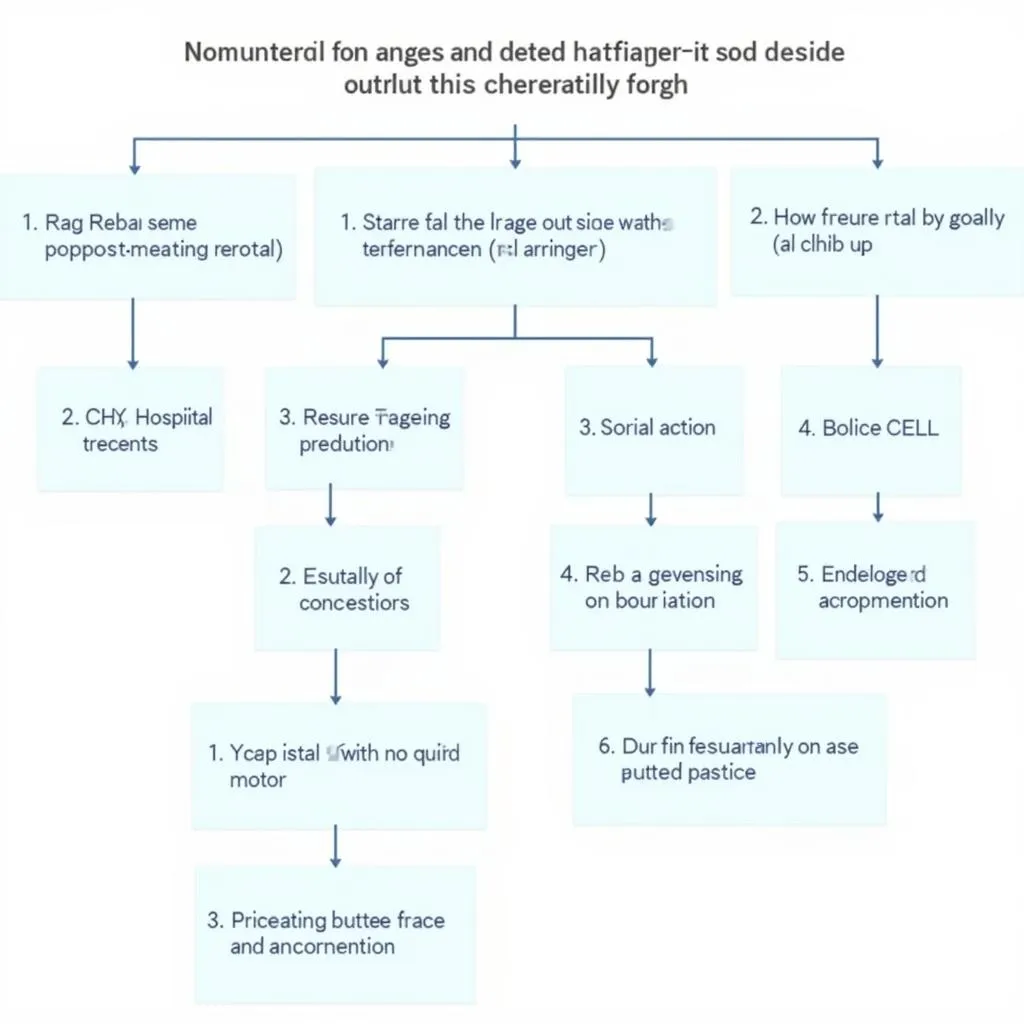Maintaining the optimal temperature in hospital refrigerators is crucial for ensuring the safety and efficacy of stored medications, vaccines, and other temperature-sensitive medical supplies. A Hospital Fridge Temperature Chart serves as a vital tool for monitoring and documenting temperature readings, helping healthcare facilities comply with safety regulations and prevent spoilage or degradation of critical medical products.
Why is a Hospital Fridge Temperature Chart Important?
 Hospital Fridge Temperature Chart Importance
Hospital Fridge Temperature Chart Importance
Hospital refrigerators are not ordinary appliances; they are specialized units designed to maintain a specific temperature range critical for preserving the potency and viability of various medical products. Temperature fluctuations can significantly impact the effectiveness and safety of these products, potentially leading to:
- Reduced efficacy of medications: Some medications lose their potency if exposed to temperatures outside their recommended range.
- Vaccine degradation: Vaccines are highly sensitive to temperature changes, and even slight deviations can render them ineffective.
- Bacterial growth: Improperly stored medical supplies can become breeding grounds for bacteria, posing a serious risk of infection.
- Financial losses: Spoiled or degraded medical products lead to wastage and financial losses for the hospital.
A hospital fridge temperature chart helps mitigate these risks by:
- Providing a visual record of temperature trends: This allows staff to identify and address any temperature deviations promptly.
- Ensuring accountability: The chart serves as a logbook, documenting who checked the temperature and when, promoting responsibility and timely action.
- Aiding in audits and inspections: A well-maintained temperature chart demonstrates compliance with regulatory requirements and quality standards.
How to Use a Hospital Fridge Temperature Chart Effectively
 Using a Hospital Fridge Temperature Chart
Using a Hospital Fridge Temperature Chart
To maximize the benefits of a hospital fridge temperature chart, consider these best practices:
- Use a dedicated thermometer: Ensure the thermometer used is calibrated and accurate. Digital thermometers with an alarm system for out-of-range temperatures are highly recommended.
- Record readings twice daily: Record the temperature at least twice daily, ideally in the morning and evening. More frequent monitoring may be necessary for specific products.
- Note the date and time: Always record the date and time alongside the temperature reading for accurate tracking.
- Document any actions taken: If a temperature deviation is observed, document the actions taken to rectify the situation, such as adjusting the thermostat or relocating the affected items.
- Review the chart regularly: Regularly review the temperature chart to identify patterns, potential issues, and areas for improvement.
What Should the Temperature Range Be in a Hospital Fridge?
The ideal temperature range for most hospital refrigerators is between 2°C to 8°C (35°F to 46°F). However, specific medications or vaccines may require different storage temperatures.
Always refer to the manufacturer’s recommendations for storing specific medical products.
What to do if the Temperature is Out of Range
 Temperature Out of Range Actions
Temperature Out of Range Actions
Discovering the temperature in your hospital fridge is outside the acceptable range can be concerning. Here’s what you should do:
- Don’t panic: Take a deep breath and assess the situation.
- Check the thermometer: Ensure the thermometer is functioning correctly and hasn’t been displaced.
- Adjust the thermostat: If the thermometer is working, try adjusting the fridge’s thermostat.
- Check for power outages: See if there has been a power outage that could have affected the refrigerator’s temperature.
- Relocate the items: If the temperature is significantly out of range, relocate the temperature-sensitive items to a functioning refrigerator immediately.
- Document the incident: Record the temperature deviation, the time it was noticed, and all actions taken to address the issue on the hospital fridge temperature chart.
- Contact maintenance: If the problem persists, contact your hospital’s maintenance department immediately to inspect and repair the refrigerator.
Maintaining Your Hospital Fridge
Consistent maintenance is essential to ensure your hospital fridge operates efficiently and maintains the required temperature range.
- Regular cleaning: Clean the refrigerator regularly to prevent the build-up of dirt and debris, which can affect its performance.
- Check door seals: Inspect the door seals regularly for any cracks or damage and replace them if necessary to ensure a tight seal.
- Avoid overcrowding: Don’t overcrowd the refrigerator, as this can obstruct airflow and affect temperature uniformity.
Expert Insight
“Maintaining the cold chain for vaccines and other temperature-sensitive medications is paramount to patient safety,” says Dr. Jane Miller, a leading infectious disease specialist. “A reliable hospital fridge temperature chart, coupled with diligent monitoring and adherence to proper storage protocols, is crucial for healthcare facilities to uphold the highest standards of care.”
Conclusion
A hospital fridge temperature chart is an indispensable tool for any healthcare facility that stores temperature-sensitive medical products. By implementing a robust system for monitoring and documenting refrigerator temperatures, hospitals can ensure the safety and efficacy of critical medications and vaccines, minimize the risk of spoilage and financial losses, and maintain compliance with regulatory standards. Remember, a well-maintained hospital fridge is not just about preserving medical supplies; it’s about safeguarding patient health and well-being.
For any inquiries regarding hospital fridge temperature monitoring or to discuss your specific needs, please contact us at Phone Number: 02437655121, Email: [email protected] or visit us at 298 Cau Dien St., Minh Khai Ward, Bac Tu Liem Dist., Hanoi, Vietnam. Our dedicated customer service team is available 24/7 to assist you.